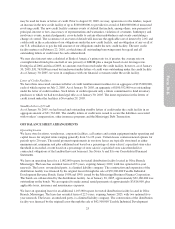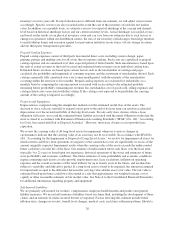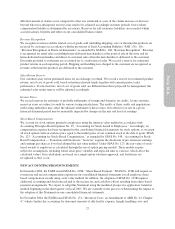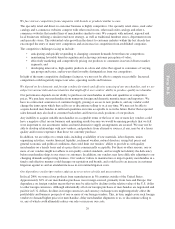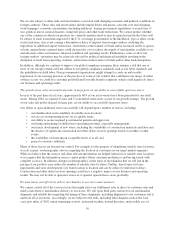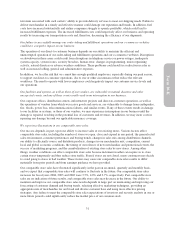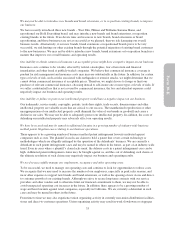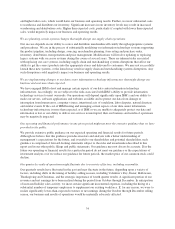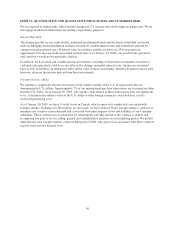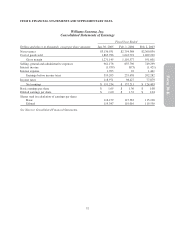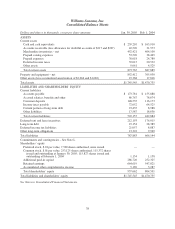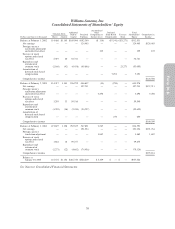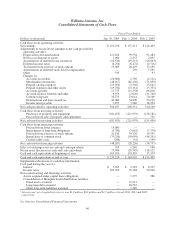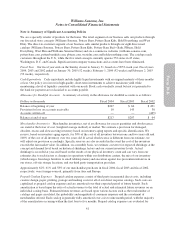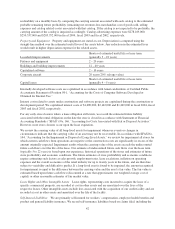Pottery Barn 2004 Annual Report Download - page 40
Download and view the complete annual report
Please find page 40 of the 2004 Pottery Barn annual report below. You can navigate through the pages in the report by either clicking on the pages listed below, or by using the keyword search tool below to find specific information within the annual report.
We may not be able to introduce new brands and brand extensions, or to re-position existing brands, to improve
our business.
We have recently introduced three new brands – West Elm, PBteen and Williams-Sonoma Home, and
repositioned our Hold Everything brand, and may introduce new brands and brand extensions, or reposition
existing brands, in the future. If we devote time and resources to new brands, brand extensions or brand
repositioning, and those businesses are not as successful as we planned, then we risk damaging our overall
business results. Alternatively, if our new brands, brand extensions or repositioned brands prove to be very
successful, we risk hurting our other existing brands through the potential migration of existing brand customers
to the new businesses. We may not be able to introduce new brands, brand extensions or to reposition brands in a
manner that improves our overall business and operating results.
Our inability to obtain commercial insurance at acceptable prices might have a negative impact on our business.
Insurance costs continue to be volatile, affected by natural catastrophes, fear of terrorism and financial
irregularities and other fraud at publicly-traded companies. We believe that commercial insurance coverage is
prudent for risk management and insurance costs may increase substantially in the future. In addition, for certain
types or levels of risk, such as risks associated with earthquakes or terrorist attacks, we might determine that we
cannot obtain commercial insurance at acceptable prices. Therefore, we might choose to forego or limit our
purchase of relevant commercial insurance, choosing instead to self-insure one or more types or levels of risks. If
we suffer a substantial loss that is not covered by commercial insurance, the loss and attendant expenses could
negatively impact our business and operating results.
Our inability or failure to protect our intellectual property would have a negative impact on our business.
Our trademarks, service marks, copyrights, patents, trade dress rights, trade secrets, domain names and other
intellectual property are valuable assets that are critical to our success. The unauthorized reproduction or other
misappropriation of our intellectual property could diminish the value of our brands or goodwill and cause a
decline in our sales. We may not be able to adequately protect our intellectual property. In addition, the costs of
defending our intellectual property may adversely affect our operating results.
We have been sued and may be named in additional lawsuits in a growing number of industry-wide business
method patent litigation cases relating to our business operations.
There appears to be a growing number of business method patent infringement lawsuits instituted against
companies such as ours. The plaintiff in each case claims to hold a patent that covers certain technology or
methodologies which are allegedly infringed by the operation of the defendants’ business. We are currently a
defendant in such patent infringement cases and may be named in others in the future, as part of an industry-wide
trend. Even in cases where a plaintiff’s claim lacks merit, the defense costs in a patent infringement case can be
high. Additional patent infringement claims may be brought against us, and the cost of defending such claims or
the ultimate resolution of such claims may negatively impact our business and operating results.
We need to successfully manage our employment, occupancy and other operating costs.
To be successful, we need to manage our operating costs and continue to look for opportunities to reduce costs.
We recognize that we may need to increase the number of our employees, especially in peak sales seasons, and
incur other expenses to support new brands and brand extensions, as well as the opening of new stores and direct-
to-customer growth of our existing brands. Although we strive to secure long-term contracts with our service
providers and other vendors and to otherwise limit our financial commitment to them, we may not be able to
avoid unexpected operating cost increases in the future. In addition, there appears to be a growing number of
wage and hour lawsuits against retail companies, especially in California. We are currently a defendant in such
cases and may be named in others in the future.
From time to time we may also experience union organizing activity in currently non-union distribution facilities,
stores and direct-to-customer operations. Union organizing activity may result in work slowdowns or stoppages
33
Form 10-K


